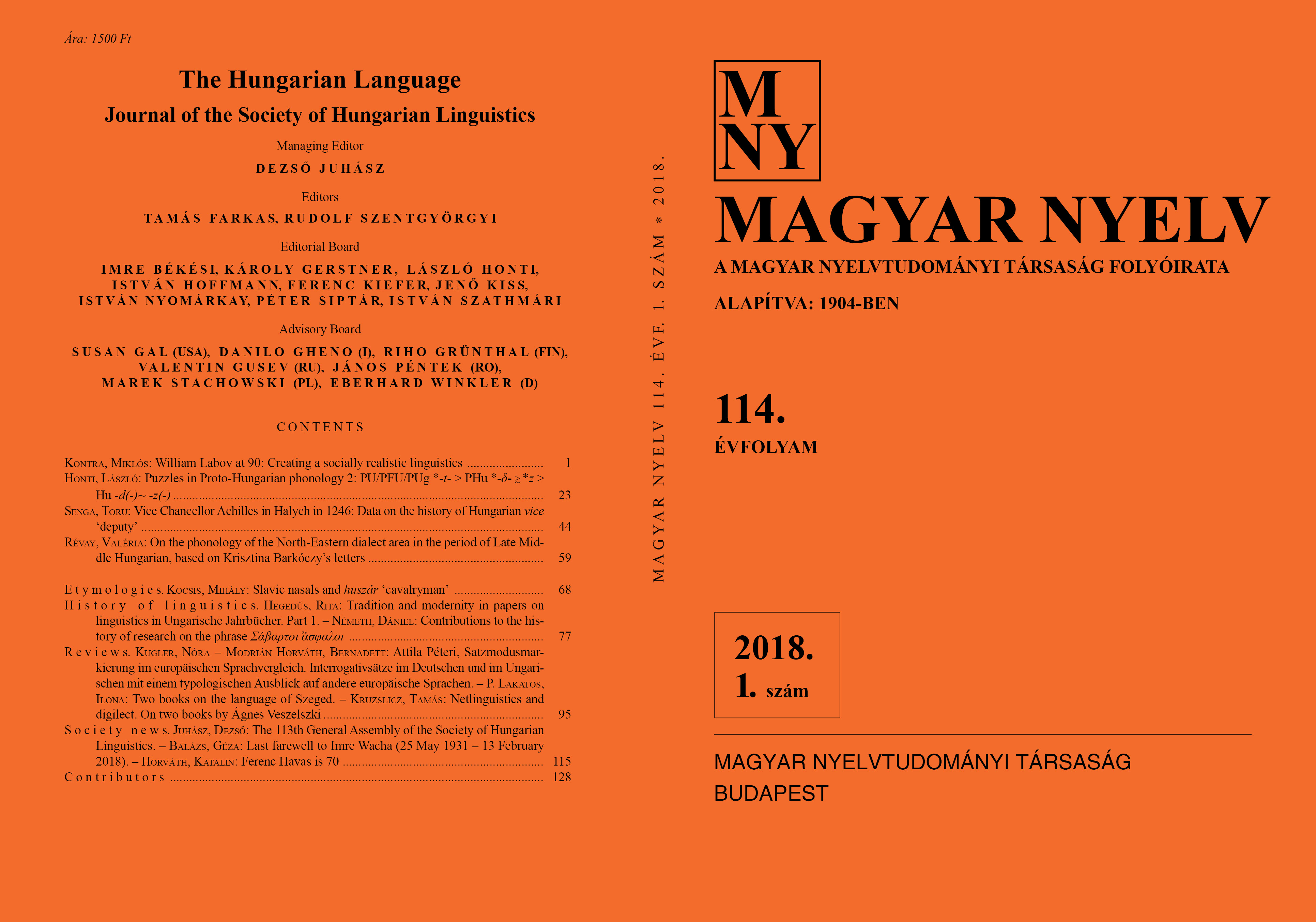On the phonology of the North-Eastern dialect area in the period of Late Middle Hungarian, based on Krisztina Barkóczy’s letters
DOI:
https://doi.org/10.18349/MagyarNyelv.2018.1.59Keywords:
historical dialectology, historical linguistics, Middle Hungarian period, North- Eastern dialect region, phonological propertiesAbstract
This paper explores phonological phenomena of the North-Eastern dialect area in the period of Middle Hungarian, on the basis of Krisztina Barkóczy’s letters to her husband, General Sándor Károlyi between 1698 and 1711. Krisztina Barkóczy (1670–1724) lived in Ugocsa and Bereg Counties, and later in the Károlyi estates in Szatmár County. The texts follow the literary norms of the period but they also reflect contemporary spoken Hungarian. From them, we get a taste of the major phonological properties of the dialect of the region: its preference for close vowels, the extended distribution of /iː/ and /o/, the use of /ø/ in inflected forms of /s/~/v/-stem verbs, the preference for palatal sonorants (/n/ > /ɲ/, /l/ > /ʎ/), the gemination of /l/, /ʎ/, /ʃ/, and the frequent occurrence of consonant shortening.
Downloads
Published
Issue
Section
License
Copyright (c) 2024 Valéria Révay

This work is licensed under a Creative Commons Attribution-NonCommercial-NoDerivatives 4.0 International License.
Magyar Nyelv is a Diamond Open Access periodical. Documents can be freely downloaded and duplicated in an electronic format, and can be used unchanged and with due reference to the original source. Such use must not serve commercial purposes. In the case of any form of dissemination and use, Hungarian Copyright Act LXXVI/1999 and related laws are to be observed. The electronic version of the journal is subject to the regulations of CC BY-NC-ND (Creative Commons – Attribution-NonCommercial-NoDerivatives).
The journal permits its authors, at no cost and without any temporal limitation, to make pre-print copies of their manuscripts publicly available via email or in their own homepage or that of their institution, or in either closed or free-for-all repositories of their institutions/universities, or other non-profit websites, in the form accepted by the journal editor for publication and even containing amendments on the basis of reviewers’ comments. When the authors publicize their papers in this manner, they have to warn their readers that the manuscript at hand is not the final published version of the work. Once the paper has been published in a printed or online form, the authors are allowed (and advised) to use that (post-print) version for the above purposes. In that case, they have to indicate the exact location and other data of the journal publication. The authors retain the copyright of their papers; however, in the case of an occasional secondary publication, the bibliographical data of the first publication have to be included.



